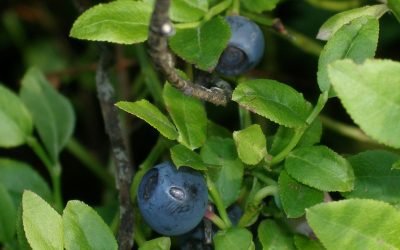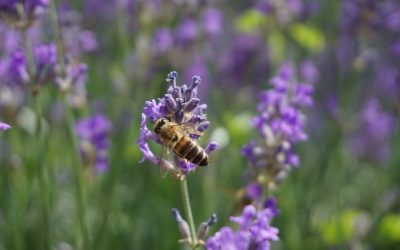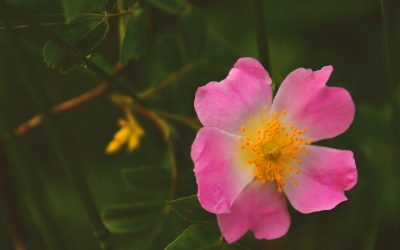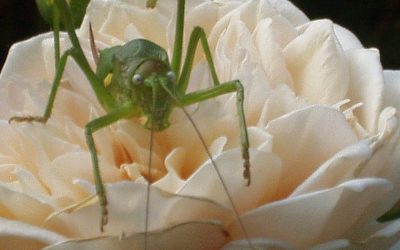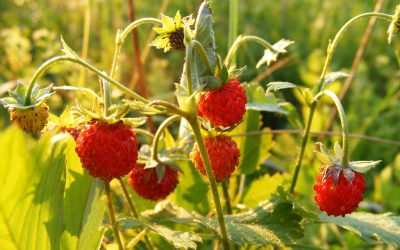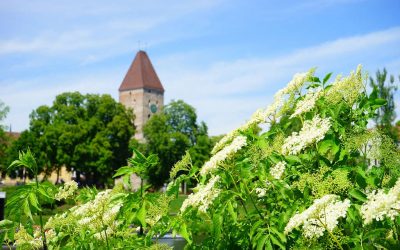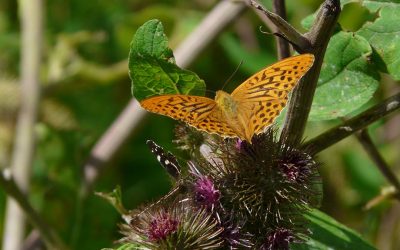Nature Notes:

Happy Beltane!
Happy Beltane!
On May 1, we celebrate Beltane, the festival of spring.
Mother Earth is donning her lushest gown of flowers and blossoms, and birds are singing from the trees. The heart rejoices, and the spirit soars!
Beltane is the season of blossoming fertility, joy, abundance and creativity. We celebrate the sheer miracle of life in all its beauty.
The God and the Goddess embody the undying force of life, and they are in love. Nature mirrors their bliss. Their dance turns the land green and lush with every step. Every fragrant flower is a kiss and a blessing, a sign of their adoration.
We are invited to join them and share in their passion. Let’s celebrate life! Beauty, love, and merry-making are our rituals, and the energy is tangible.
Gardeners witness and partake in this magic as they nurture young seedlings. But even if you don’t have a garden, you can still participate – just tend to your inner garden! Pour energy into your budding projects, and you will experience a similar phenomenon – the magic of creativity.
The secret ingredient of manifestation is the love and nurture with which we tend to our seed ideas.
Take the time to reflect on Mother Nature’s generosity, and practice gratitude and mindfulness to attune to every nuance of this blessed season.
Photo credit: Image by Ronny Overhate from Pixabay
Current issue
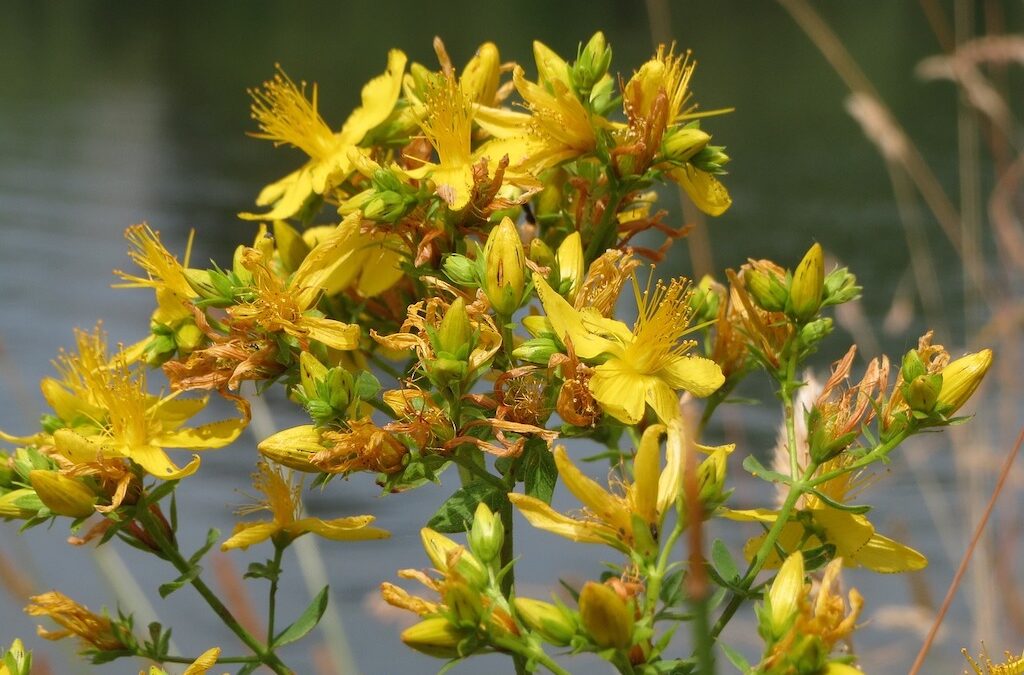
Plant Profile: St. John’s Wort
Hypericum perforatum (Clusiaceae)
St John’s Wort is the kind of herb that gladdens the heart just by looking at it. Many magical and medicinal properties have been ascribed to it and even its name alludes to certain divine connotations: it was named in honour of St. John, the Baptist, whose saints’ day is on June 23rd. He presides over the Christianised version of the Midsummer Feast, the most important feast day of the ancient pastoral calendar. Yet, it is often considered a noxious weed, particularly in agricultural circles. Let’s take a closer look.
Description:
St. John’s Wort is a perennial herbaceous plant that can reach a height of up to 2ft. The stem bears two raised lines along their length and branches in the upper parts. Numerous translucent dots cover the ovate to linear leaves. These are oil glands that store essential oil. The margins are entire and show tiny black dots around the edges. These oil glands produce the red oil. The five-petaled, yellow flowers look like little stars or suns. Clusters of flowers bloom from June to September. The tiny seeds are borne in capsules. St John’s Wort tastes balsamic, aromatic and slightly bitter. Squish the flower-buds between your fingers to verify its identity. St. John’s Wort, when pressed, stains red.
Habitat:
St. John’s Wort grows throughout Central Europe and the British Isles. Its habitats are verges, meadows, hedgerows, wood clearings, and waste places. It has become naturalised in many parts of the US, where it is regarded as a noxious weed.
HISTORY
The Doctrine of signatures assigns this herb to the Sun, not only because its flowers look so sunny, but also because its flowering- and gathering season coincides with the zenith of the Sun at Midsummer. At this time, its potency is at its peak. The reddish oil has been associated with blood, the sacred juice of life. Saint John’s Wort has long been revered as a magical herb that was said to ward off all kinds of witches and devils, and was even often offered as a Midsummer sacrifice to ensure the continuity of life.
Some sprigs were cast on the solstice bonfires, others were blessed and hung above the doorways and into the rafters of stables and barns. This custom was believed to offer protection against the hazards of the burning power of the sun: fires, lightning, and droughts, and to ward off witches and demons.
St John’s Wort enjoyed its greatest glory during the Middle Ages, when it was known as ‘Fuga Daemonium’ and it was deemed a protective force against all evil.
All efforts of the Church to demonise the herb had failed and so it was absorbed into Christian mythology and given to St. John, the Baptist, who’s Saints Day falls on June 24th, right at the height of the herb’s flowering time. The red oil was said to be a reminder of the Saint’s martyrdom.
Many of the old Pagan traditions were absorbed into the new faith but reinterpreted to fit its own mythology: It was probably the only herb to have been used in the Witch trials to identify witches, using talismanic magic:
The formula:
SATOR
AREPO
TENET
OPERA
ROTAS
was written on a piece of paper and placed on a piece of leather along with some St. John’s Wort that had been gathered during the first quarter of the moon. This talisman was supposed to reveal the true identity of a witch, since no witch could disguise her identity in the presence of such a forthright and radiant herb. It had the power to banish all the evil powers. (Just how it did so is not clear).
Today, St. John’s Wort’s magical associations have largely been forgotten. But it continues to play an important role in medical herbalism, especially as a natural anti-depressant. But not all consider it benevolent. In the US, it is considered a noxious weed that is dangerous to cattle. The allegations are that its photosensitising properties are hazardous to humans and cattle alike.
St. Johns Wort is indeed photosensitising. It is most likely to harm grazing animals that may consume large amounts of it while being exposed to intense heat without access to sheltering shade. This problem is severe in the overgrazed southwestern parts of the US. Internal use of St. John’s Wort herb rarely poses this threat to humans, (although it is conceivable). It is therefore recommended to avoid St. John’s Wort if one spends a lot of time in the sun or in the solarium.
Caution is also advised when using it in the treatment of depression. St. John’s Wort affects the serum-levels of the Neurotransmitter Serotonin, which may produce negative effects when used with other anti-depressant drugs that also affect the metabolism of neurotransmitters. Finally, St John’s Wort is a powerful liver cleanser. It cleanses the liver eliminates all kinds of toxins – including pharmaceutical drugs and birth control pills, rendering them useless. Thus, it is always advised to consult with a qualified practitioner who can advise you on any drug interactions or other ill-effects, before attempting to use St. John’s Wort medicinally.
Medicinal Uses
PARTS USED: Aerial parts, collect when in flower, for the oil usually only the flowering tops are used
CONSTITUENTS: Essential oil – caryophyllene, methyl-2-octane, n-nonane, n-octanal, n-decanal, a-and b pinene, traces of limonene and myrcene, hypericin (photosensitizing), hyperforin, Glycosides (rutin), tannin, resin, pectin
ACTIONS: Antidepressant, sedative, nervine, anti-inflammatory, anti-bacterial, astringent, vulnerary, diuretic
MEDICINAL USES:
Internal Use:
St. John’s Wort is a tonic for the whole body: a gentle cleansing remedy that improves overall function and tones the vital organ systems. It improves and regulates the metabolism and tones the stomach, liver, and kidneys, thus helping the body to clear out toxins. Internally, a small amount of the oil or, better still, the expressed juice, taken on an empty stomach, has been used for treating stomach ulcers and gastritis. Freshly pressed St. John’s Wort juice also has a history of use as an astringent to stop internal bleeding, spitting of blood, and (bloody) diarrhoea.
St John’s Wort is also an excellent nervine. Its calming and sedative properties soothe the nerves, headaches and migraines and alleviate anxiety, melancholy, and irritability, especially during menopause, or PMT. Old herbals also recommend it for ‘shaking and twitching’ (Parkinson? Epilepsy?). It is considered a specific for curing bed-wetting in children, especially when caused by anxiety. For this purpose, 1 tablespoon of the infusion, given at bedtime, is said to suffice. As a diuretic, St. John’s Wort assists the kidneys to flush waste materials and toxins from the body. The tea is effective for indigestion, stomach catarrh, and as a vermifuge. For therapeutic purposes, it is best to use the fresh herb or tincture, as the dried herb has lost much of its potency.
External Use:
In the past, the external use of St. John’s Wort was much more common. It was cherished as an excellent wound healer that could cleanse the wound and ‘knit the skin together’. It was applied to wounds and cuts, bruises, varicose veins, and burns. For this purpose, the expressed juice, or a compress made from the fresh, bruised herb was used. Modern herbalists prefer a diluted tincture. Tabernaemontana reports that the powdered dried herb can be strewn directly into ‘foul’ wounds to clean and heal them. In his days, midwives also used the herb as a fumigant to help women who encountered severe problems with their pregnancies or during childbirth.
St. John’s Wort Oil
Traditionally, the flowers were steeped in Poppy seed oil to produce a bright red oil. However, since Poppy Seed oil has become very hard to find, Olive oil can be substituted. After gathering the fresh tops, spread them out on a baking sheet and let them wilt for a few days. This will evaporate most of their water content. Fill a jar with the wilted flowering tops and cover with oil. Macerate for 4 weeks in full sun. Strain the oil, repeat the process using the same oil but adding fresh flowers. This oil is used for treating sunburn, other mild burns, neuralgia, sciatica, and rheumatic pain, as well as sprains and strains, cuts, wounds, as well as muscle aches and nerve pains. It is also said to reduce scarring. Tabernaemontana mentions an elaborate recipe for a compound oil, which, among other things, includes various gums and resins, such as frankincense, myrrh, mastic and other herbs, including Plantain leaves, Yarrow and Tormentil, which he claims, will be a superior oil, effective for treating just about any kind wound.
CAUTION:
Since St. John’s Wort contains the photosensitising agent hypericin, avoid direct sunlight after either internal and external use of St. John’s Wort. If you are taking pharmaceutical drugs, especially anti-depressants, consult with a knowledgeable doctor regarding the possibility of negative drug interactions. The efficacy of birth control pills can not be taken for granted if St. John’s Wort is used orally at the same time.
Plant Profile:
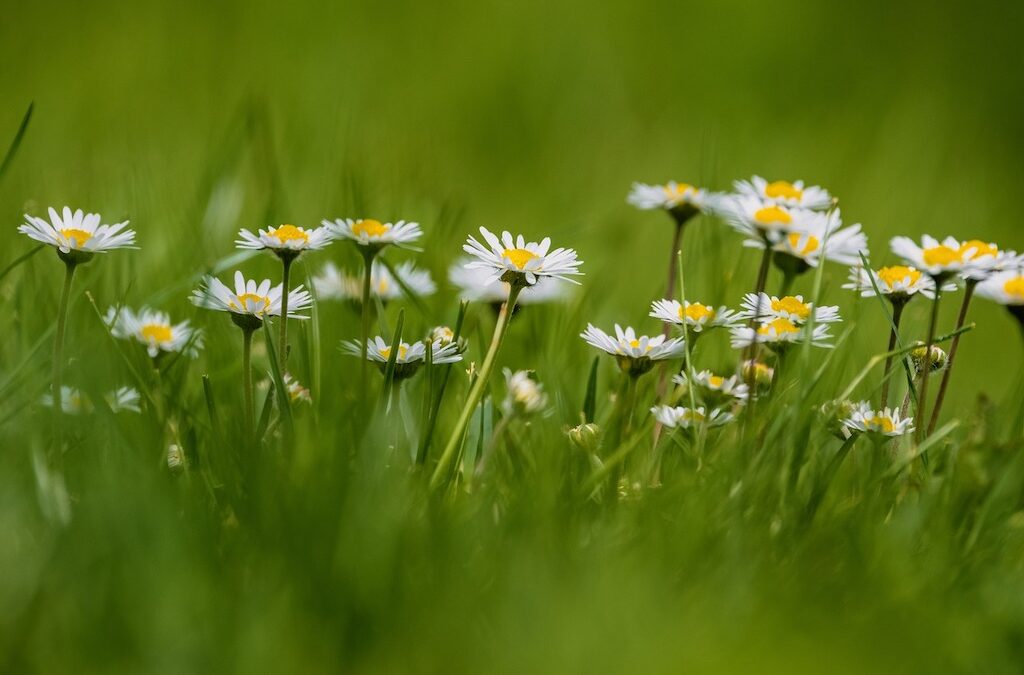
Foraging Daisy (Bellis perennis)
Foraging Daisy (Bellis perennis)
The dainty Daisy is a picture of innocence: it seems to have been made for adorning children’s heads. But there is a lot more to these lovely little flowers than meets the eye.
Etymology
The English name ‘Daisy’ means ‘Day’s Eye’ because the Daisy opens its flower head in the morning and closes it at night.
But the origin of its Latin name is a lot more surprising and somewhat controversial. Bellis means ‘pretty’ – an obvious choice for this little herb. But Mrs Grieves thinks it may have been named after a dryad known as Belidis. Another common name is ‘Baldur’s Brow’, linking the Daisy to the Norse Sun God Baldur. Another association links it to Bellona, a Goddess of war. Judging only by its appearance, this suggestion seems improbable, but its traditional medicinal uses give a deeper insight.
Properties of Daisy
Daisies first appear around the Spring Equinox, when the Sun enters Aries, which is ruled by Mars. The ancient herbalists used Daisy as a vulnerary – an herb to treat wounds, and as an anti-inflammatory and diaphoretic, for treating fevers. Inflammation, fever, and wounds all suggest a ‘Martian’ connection.
Mars also leaves its signature on the taste sensation. The leaves and roots are quite astringent, almost hot, but very unlike the heat of chillies. Instead, it is a spreading, radiating warmth, not a blistering burn.
The leaves are a little rough and moist, and have a demulcent quality. The old herbalists found Daisy’s heat suitable for treating conditions characterized by retracted, cold phlegm. Daisies loosen congestive conditions caused by an excess of cold moisture -as the ancient herbalists would put it.
Modern clinical herbalists have all but forgotten the pretty English Daisy. They use her sister, the Ox-Eyed Daisy, instead. Both can be used for similar complaints. Ox-Eyed Daisies are an excellent remedy for chronic bronchial conditions, asthma, and whooping cough. It is also used to treat nervous excitability and, prepared as a lotion or ointment, as a wound herb.
Wild herbs are not only nutritious but also therapeutic – and none more so than the early spring herbs. They often provide just what our bodies need to restore vitality after fending off winter bugs.
Daisy as Wild Food
Recipes
Daisy in the Salad:
Daisy leaves and flowers can be added to spring salads. The young, tender leaves are rich in vitamin C, and their heat produces a diaphoretic effect.
Daisy Capers:
Conventional Capers are made from the unopened flower buds of the caper tree (Capparis spinosa.) But inventive foragers use the same method on other flower buds, such as Daisies or Dandelions (only use edible flowers!)
The basic recipe is quite simple:
Pick about one cup of Daisy buds, wash, and cover them with about 500 ml of salted water. Quickly bring to a boil and strain through a cheesecloth or finely meshed strainer.
Place the buds into a stone jar and pour 500 ml of boiling vinegar over them.
Make sure they are completely covered.
After about 4-5 days, pour the buds and vinegar into a pan and, making sure the buds are covered, bring to a boil.
Let them cool, jar and cover with jam cling film to prevent the buds from coming into direct contact with the air and turning mouldy.
Daisy Soup:
Daisy soup is quick and easy to prepare and can be made at almost any time of the year. Use all parts of the plant: roots, leaves and flowers. (Only use the roots if Daisies are prolific in your area.) Picking the plants is easy, but if you have heavy clay soil, be prepared for clots of dirt to cling to the roots, making cleaning them tedious.
Pick about 6-8oz of flowers (roots, leaves and tops), clean well and chop them up (not too small).
Quickly sauté them in a heavy pan with a few drops of olive oil.
Add half a cup of white wine or apple cider, let the alcohol fly off, and stir in 1 litre of vegetable broth. Season to taste and finish off with a dash of cream. Serve with croutons.
#Ads
Disclosure: As an Amazon Associate, I earn from qualifying purchases.
More articles:
Climate Change – what can we do?
"The climate emergency is THE defining issue of our times." It is the beginning of August, the time of ripening fruits. The year is progressing rapidly and the sun is already past its peak. It has been a stormy first half of the year with weather extremes throughout...
Plant Profile: Corn (Zea Maize)
Plant Profile Corn, (Zea Maize), the ‘staff of life’ of the Americas, its history, mythology and uses, medicinal properties and recipes
Plant Profile: Opium Poppy (Papaver somniferum)
Poppies come in almost every color. The flowers have an ephemeral appearance, quite otherworldly and mysterious.
Let Your Foods Be Medicines
Nutrition plays a vital part in maintaining good health. Common foods have healing properties, yet, are much safer to use than chemically more potent drugs.
Blueberries (Vaccinium myrtillus)
Summer is berry bliss. Bilberries are not just delicious but also incredibly healthy. Medicinal information and recipes.
What are Essential Oils?
What are essential oils? History and uses of essential oils, methods of extraction, various applications, and any potential concerns
Plant Profile: Medicinal Uses of Rose
Roses have long been valued for their various medicinal benefits. The petals are rich in essential oils, while the rosehips are rich in vitamins. The seeds are a valuable source of GLA
Plant Profile: Rose History (1)
Everybody knows and loves the thorny, but beautiful rose, as a universal symbol of love, although we are mostly familiar with the cultivated varieties.
Foraging Wild Strawberries
I adore wild strawberries! As far as I am concerned they are the ULTIMATE wild food.
the Elder-tree in myths, magic, and medicine
The Elder tree is the medicine cabinet of the country people. This much loved, bushy tree is a common sight throughout Britain, Europe, and North America.
The Old Tree and the Carpenter
A parable about the ‘usefulness’ of other species’, vs. the innate value of all species for their own sake, and the preciousness of life.
Burdock – Arctium Lappa
Burdock may not be the prettiest herb, but it is certainly one of the most eye-catching. Its huge leaves and burly flowers are highly conspicuous. And it has plenty to offer.






